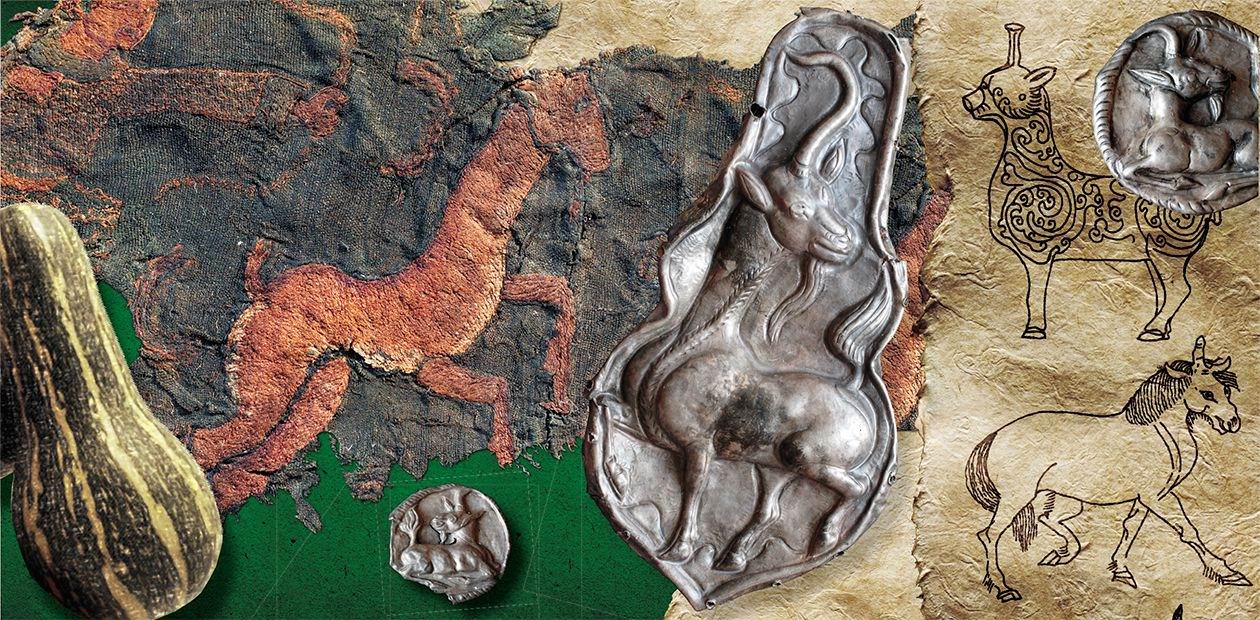«On Paths of Which no One has Knowledge of Unseen Beasts there Lurk the Spoors...»
Xiongnu (Khunnu) are ancient nomadic people who founded the first nomadic empire. Until quite recently they have been known exclusively from Chinese Chronicles. Only in the early 20th century the richest burials of the representatives of Xiongnu nobility have been found in the northern Mongolia. New diggings at the Khunnu tsars' kurgans in Mongolia have unearthed remarkable silver plates which are horse harness adornments. Standing out among them are artifacts with original depictions of a fantastic animal, the unicorn, which had not been previously found in the world art. Such plates making part of horse trimmings have been discovered so far only in the 20th Noin-Ula kurgan excavated by the Russian-Mongolian expedition and in the 20th kurgan of the Gol Mod necropolis explored by the French-Mongolian expedition. In Chinese mythology a unicorn is exceptionally peaceful and noble animal, and its horn symbolizes national unity.
Why this sacred symbol for Chinese has been found on the horse croups? May be decorations made by Chinese craftsmen were designated for Khunnu rulers in "educational" purposes; quite possibly that Khunnu breeders put in their own sacred sense into the images of the fantastic horned animal. On the other hand, we still do not know who was buried in the largest Khunnu kurgans. It is considered a priori that these were representatives of the Xiongnu elite, chanyus and their retinue. The latter might have included, apart from the wives and children, outstanding military commanders of non-Xiongnu tribes and even the Chinese. This should be explored by researchers
Origin of the image of a unicorn is lost in remote ages. Its first depictions as a bull with a single horn are believed to be present on the seals of the ancient city-settlements Mohenjo-Daro and Harappa located in the Indus valley (3rd millennium BC). These depictions may be regarded as images of a bull seen sideways were it not for the mention of the unicorn as an important sacred symbol in the Indian Atharvaveda and Mahabharata.
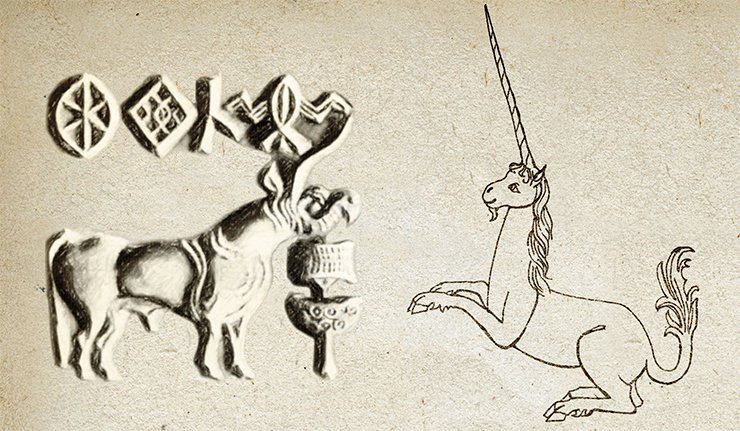
The image of a unicorn in Central Asian and European art is believed to have ancient Indian roots. Greek and Roman authors, from Ctesias to Cesar, see the unicorn as an animal that really exists. Pliny the Elder (VIII, 21) writes: “The unicorn (monocerotem) is the fiercest animal. It has the body of a horse, the head of a stag, the feet of an elephant, the tail of a boar; it neighs in a disgusting voice, and has a single black horn three feet long in the middle of its forehead. It is said that it is impossible to capture it alive.” A Greek “Physiologist” (2nd—3rd cc. BC) reports that this is a “swift-footed animal with a single horn, which bears ill will towards people”. This may be the reason why no depictions of unicorns have been found either in Greek or Roman art.
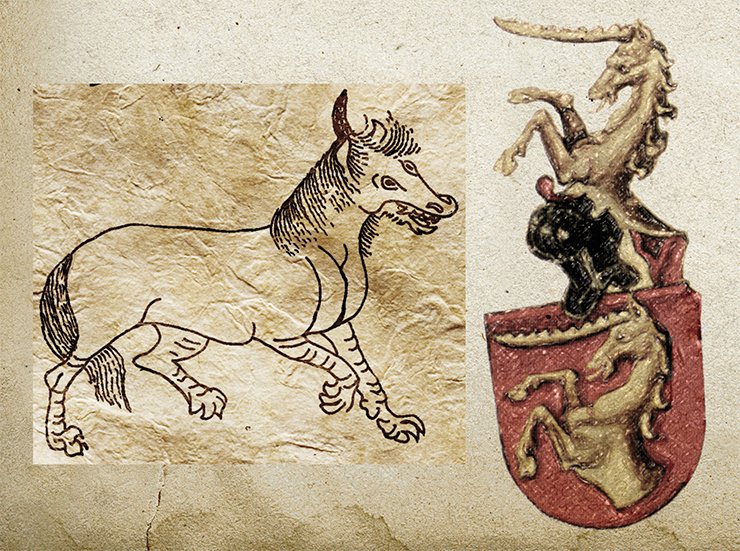
“A white horse with the fore feet of an antelope, a goat’s beard and a long corkscrew horn on its forehead” (an ordinary description of this mythical animal given by Jorge Luis Borges in his famous Book of Imaginary Beings will appear only in the 15th century. This is the way the unicorn is depicted in the famous tapestry from Musée de Cluny, The Lady and the Unicorn. In the heraldic bestiary of medieval Europe a unicorn is one of the most common monsters and chimerical animals (Pastoureau, 2003). In this unchanged form, it has survived on the state coats of arms of Great Britain and Canada.
Kylin bestowing a child
Let us leave the European unicorn for a while and turn to its Chinese brother as it is most likely that the silver plates from the Mongolian Khunnu kurgans were made by Chinese craftsmen. There is strong evidence to suggest that this fact, not yet universally recognized, is true.
Analogues of these plates have been discovered in the south – within the territory of Inner Mongolia, Northern China and North Korea. Characters depicted on the silver plates adorning horse harness include, on top of unicorns, animals and birds of Chinese bestiary: dragons, Phoenix birds, deer and winged gazelles.
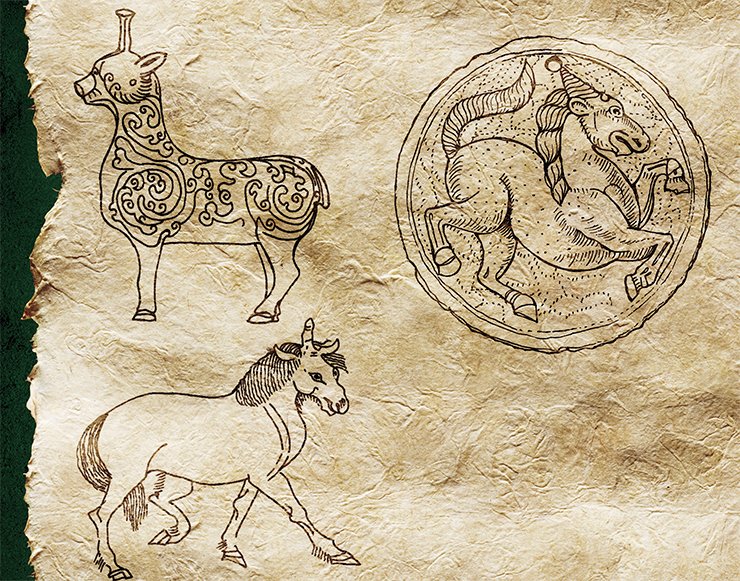
From: (Kravtsova M.E., History of Chinese Art, 2004)
As a rule, they are placed in a fantastic mountainous landscape shown on all the plates in a totally identical symbolic manner typical of Chinese art. On the plates from the Khunnu burial site of the Gol Mod necropolis, the unicorns’ bodies have the so-called “tongues of flame” – an element of art characteristic of the Chinese Han Empire. Several of the plates discovered in China have a cast-iron base covered with gold foil (Bunker, 2002). Cast iron was not known anywhere but in China at that time (it was first mentioned in 6th c. BC). Apart from other applications, the Chinese used it in ornamental casting.
The pear shape of the plate from the Khunnu kurgans has no analogues either in the art of Eurasian nomads or in the Hellenistic art of the West. In all probability, this is also a Chinese invention. Its prototype could have been a crook-necked pumpkin, which was “originally given a special magic meaning”. Such a pumpkin was one of the most widespread mythological and artistic images among the fruit of ancient and medieval China: the crook-necked pumpkin shape was common for vessels and jewelry; it was used in ornamental compositions and paintings. “Its silhouette bringing to mind a female figure and its shape consisting as though of two overlapping spheres made a crook-necked pumpkin the model of the act of birth… In the Taoist religious imagery, a crook-necked pumpkin turned into a container for the beverage of immortality, having thus become an emblem of immortality and wishes for longevity…” (Kravtsova, 2004, p. 380—381).
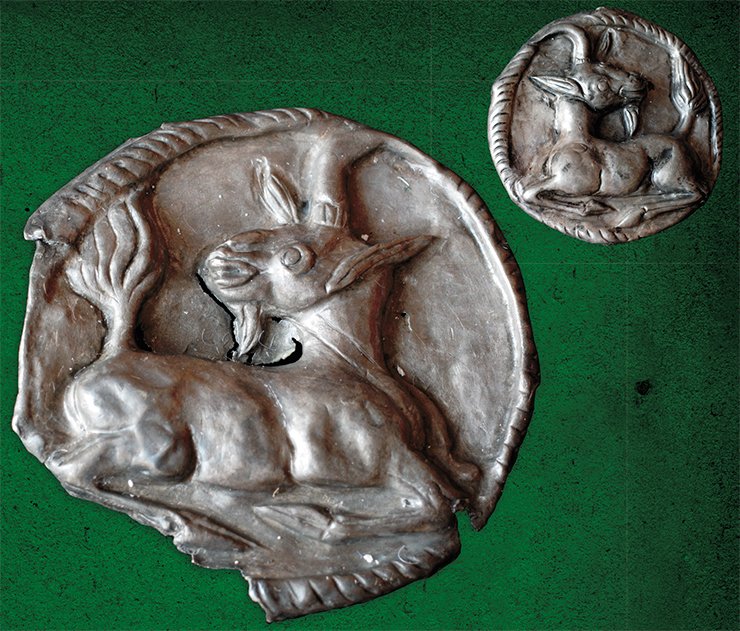
Since horse decorations were attributed great importance, it is not surprising that this unusual shape was used for horse harness trimmings.
The depiction of the unicorn in China had its own life and its own legend, unlike the European, despite their common roots. The animal itself was called a kylin (this name is sometimes interpreted as a combination of two words, “ky” (a male) and “lin” (a female).
There is a hypothesis that the name “kylin” was borrowed from the Tocharian language. The Tocharians, a Central Asian people, had contacts with the ancient Chinese as far back as in the 1st millennium BC, and the Indian depiction of the unicorn could have penetrated to China only through them (Ivanov,1992). Today, the Indian origin of the unicorn depiction both in the European and Chinese mythology and art is not doubted.
The kylin was first mentioned in the Bamboo Annals, an important chronicle of ancient Chinese history and mythology supposedly dated by 2nd c. BC. The book says that during the reign of Huan-ti (2205—2198 BC) the kylins were kept in parks. The Confucian treatise Li chi tells us that in the sacred and tranquil times of ancient emperors “Phoenixes and unicorns of the male and female gender abounded in the marsh below the town walls…” (Terentiev-Katanskiy, 2004, p. 71). This paradise epoch makes us think of the picture The Garden of Earthly Delights by Hieronymus Bosch, in which a few species of unicorns are grazing alongside real animals.
For the Chinese, a unicorn was more than an unusual animal – it was a totem, an extremely valuable symbol, much more important than its analogue in European cultures. Even today, it remains one of the most positive characters in the Chinese traditional culture. For instance, the composition The Kylin Bestowing a Child, depicting a unicorn with a baby on its back, expresses a wish for having a son to a married couple and a wish for a brilliant career to the baby. (Kravtsova, 2004, p. 395).
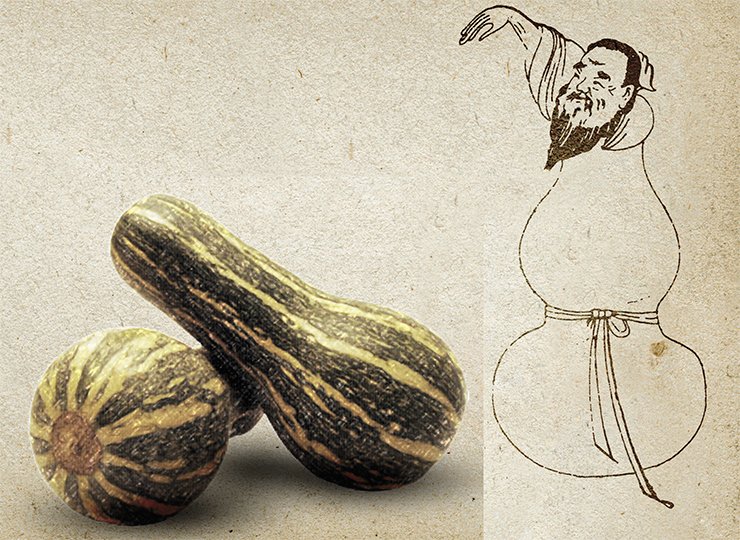
Depiction of the unicorn on the silver plates from the Khunnu burials matches almost perfectly the verbal descriptions of the animal found in Chinese sources and in mythology: the body of a deer but of a smaller size, the neck of a wolf, the tail of a bull, one horn with a soft knob at its point (a meat wart), the hooves of a horse, and multicolor (according to other versions, brown) hair.
Underlying unicorn depictions on the Khunnu plates is the image of a mountain goat, though in a very abstract form. This is an even-toed ungulate with the head of a goat decorated with a typical beard, and the body and tail of a bull. Striking the eye are unnaturally elongated, very long necks – understandably, some researchers supposed that a kylin was identical to a giraffe. As all the creatures depicted have some features of real animals, they may resemble some animals and look viable. However, they have no natural analogues – first and foremost, because of the horn located right in the middle of the skull. It looks like a bizarre crook bent backwards, put into a special hole on the forehead. It goes without saying that such a horn cannot inflict any injury, and this is the property of a true kylin.
“Baits” for chanyus?
So why did these art images created by Chinese craftsmen happen to be on the plates used to decorate Khunnu horses? What did they mean for the nomads? Could these symbols inconspicuously carry a special function and perform the role of pacifiers? Could they have been “baits” used by the Han court to pay for peace on the borders?
As it has been mentioned, in Chinese mythology a unicorn is the number one animal and, in contrast to its European brother, is exceptionally peaceful and noble, and can do no harm to anybody. Its horn symbolizes national unity or autocracy of the ruler.
A kylin was believed to bring tranquility and florescence. In Shi Jing, one of the most ancient monuments of Chinese literature, in the poem Lin the Unicorn the image of a unicorn serves as a symbol of princedom descendants. According to a belief, it was a unicorn that brought on its back symbols that gave rise to writing and offered them to Fu Xi, the ancestor of civilization.
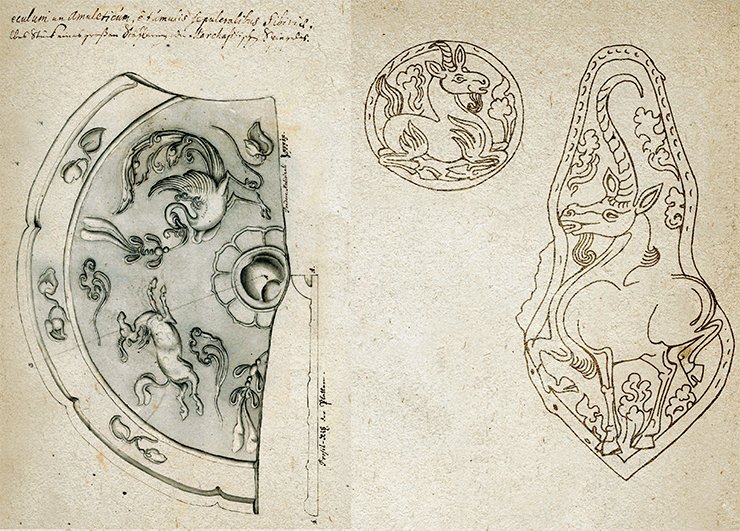
The song-charm which has survived to our days brings out the unicorn’s protective power:
Oh thou, the Unicorn!
With thy hoof
Protect our sons!
Oh thou, the Unicorn!
Oh thou, the Unicorn!
With thy brow
Protect our family!
Oh thou, the Unicorn!
Oh thou, the Unicorn!
With thy horn
Protect our kin!
Oh thou, the Unicorn!*
A kylin is a symbol of a virtuous and wise person; this personification of benevolence, kindheartedness and nobleness was considered to make a public appearance only at the time of total felicity and well-being… Attesting to the kylin’s high rank is the fact that the emblem bearing its depiction was a sign of distinction for the highest-rank military officers.
Unexpectedly, depiction of this animal, so highly revered by the Chinese, appears on the decorations of barbarian Khunnu. What was behind it? These artifacts, being gifts of the imperial court, might have made part of the “five baits” meant to bring the Khunnu to submission. The image endowed, according to Chinese mythology, with an impressive set of exceptionally positive properties could have been used for “education” and improvement of the Khunnu elite, Chanyus.
The unicorns, similarly to the dragons depicted on the four analogous plates from the 20th Noin-Ula kurgan, may have been meant not so much to raise the status of a chanyu (who could have interpreted gifts from the Chinese emperor as obtaining a portion of the donator’s charisma) as to indicate to his subordinate position (of which the chanyu did not suspect).
Alien symbols pregnant with a rich mythological content, tested and strengthened with ages, could have played the opposite role in a different culture. Dunfan Sho interpreted the depiction of a red deer which had miraculously made its way to the palace of Emperor Wu of Han as a depiction of a kylin and said it was a sign of the return of justice. As though to support this prophecy, in a year a Khunnu chanyu surrendered together with his giant army to Emperor Wu.
It would be a mistake, however, to think that Khunnu chanyus were completely ignorant of Han symbolic. This is far from true: some of them visited the Emperor’s palace; others had spent some time there as hostages, getting acquainted with all the benefits and niceties of the Han culture; some were married to Chinese wives, who, together with their retinue, were conductors of the Chinese culture in the Khunnu elite. Also, we should not forget about the high-ranking Chinese defectors and prisoners who went over to the Khunnu.
THE UNICORN The saintly hermit, midway through his prayersstopped suddenly, and raised his eyes to witness
the unbelievable: for there before him stood
the legendary creature, startling white, that
had approached, soundlessly, pleading
with his eyes.
The legs, so delicately shaped, balanced a
body wrought of finest ivory. And as
he moved, his coat shone like reflected moonlight.
High on his forehead rose the magic horn, the sign
of his uniqueness: a tower held upright
by his alert, yet gentle, timid gait.
The mouth of softest tints of rose and grey, when
opened slightly, revealed his gleaming teeth,
whiter than snow. The nostrils quivered faintly:
he sought to quench his thirst,
to rest and find repose.
His eyes looked far beyond the saint’s enclosure,
reflecting vistas and events long vanished,
and closed the circle of this ancient mystic legend.
All the above categories of people from a chanyu’s suite could have shed light on the true meaning of unicorn (and dragon) depictions. It is not inconceivable that the Khunnu, even though aware of some implications of this “Trojan horse” of a sort, paid no attention to it and used the magnificent things for their intended purpose – that is, as horse harness.
Another hypothesis is that the Khunnu put their own content into the Chinese images. The titulary of the local tribal nobility refers to the six top dignitaries as six horns. In cattle-raising communities horns were assigned various sacral properties and meanings, including that of an averter. In an environment similar to that of the Khunnu nomads, a unicorn turned out to be an understandable and positive symbol. For example, medieval Turkomen – descendants of the Khunnu – worshipped Bulan, a mythical unicorn, whose horn was a container for rain and snow.
On the other hand, because of the virtually total absence of anthropological material we still do not know who was buried in the largest Khunnu kurgans. It is considered a priori that these were representatives of the Khunnu elite, chanyus and their retinue. The latter might have included, apart from the wives and children, outstanding military commanders of non-Khunnu tribes and even the Chinese. It is known, for instance, that in 10 AD a number of important Chinese military commanders from the Western Land defected to the Khunnu. Some of them were awarded high-sounding titles and held major posts in the society (Materials, 1973, p. 56—57). It was they and their kin who could have been buried with such status Khunnu things as silver plates with unicorns.
It is not clear yet whether these artifacts were made by the Chinese craftsmen especially for the nomads or were part of the Han culture. The latter seems more plausible as prior to the Khunnu findings of the last years more plates of this kind had been found in China than in the Khunnu graves.
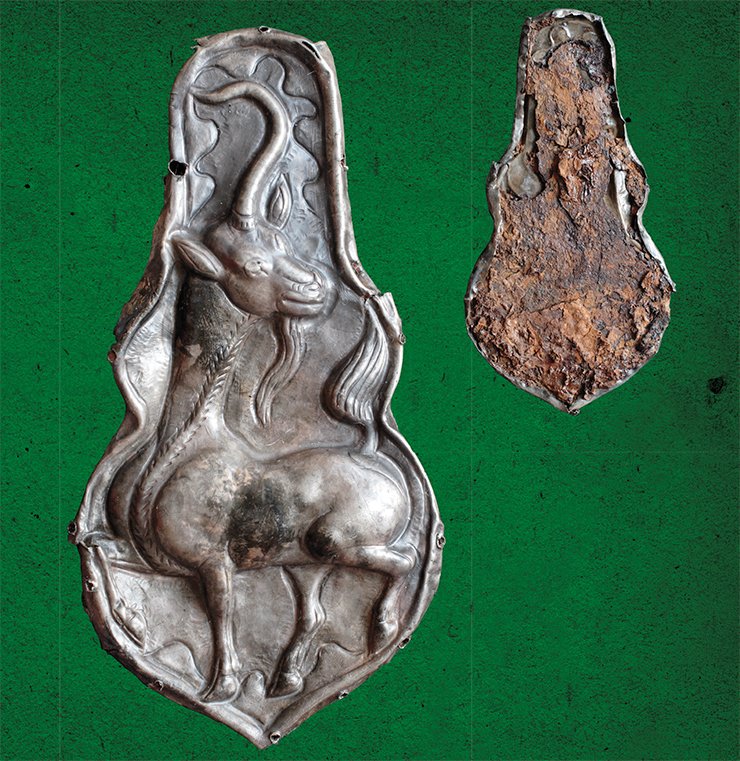
The period to which our finds belong and in which their owners lived lasted from the last years of the 1st century BC to the first decades of the 1st century AD. At that time the Khunnu pursued an active exterior policy, i. e. they would regularly raid China weakened because of the unstable political situation: the rule of the usurper Wang Mang was an endless chain of Khunnu-Chinese wars.
The Khunnu restored the border drawn by the first chanyus and conquered the Western Land. During this period, a few chanyus succeeded one another. In 8 BC Uchzhuli-zhodi came to power (he is considered to have been buried in the 6th Noin-Ula kurgan, the proof to which is the kurgan’s rich dressing and inscription on a lacquer cup dated 2 BC). After his death in 13 AD Hian came to the throne to be succeeded in five years by his brother Yui. Any of these rulers could have been buried in a Noin-Ula kurgan, as well as any person from their retinue.
We are only beginning to unravel the mystery of the life of people who once ruled a great nomadic empire and remind of it today through their graves full of remarkable and extraordinary things.
References
Kravtsova M. E. History of Chinese Art. – Krasnodar, Moscow, St Petersburg: Astrel, 2004.
Terentiev-Katanskiy A. P. Illustrations to the Chinese Bestiary. – St Petersburg, 2004.
Bunker E. C. Nomadic Art of the Eastern Eurasian Steppes. The Metropolitan Museum of Art New York Yale University Press, New Haven and London, 2002.
Borges J. L . Book of Imaginary Beings. St Petersburg: Azbuka, 1999. – 192 p.
*Anthology of the Ancient History of the East. Moscow, 1963. P. 428


